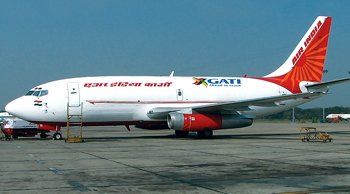Air Cargo - In its Infancy & Raring to Soar

For India, there are clearly exciting opportunities ahead as this sector is practically starting from scratch. Like Dubai and Singapore, India has the attributes to emerge as a regional cargo hub.
An unprecedented annual growth Of around 35 to 40 per cent in the number of air travelers in India in the last four years is common knowledge. What, however, is not so well known is that in recent times, air cargo traffic has also registered a modest but encouraging growth rate albeit much lower in comparison to passenger traffic. As per official figures, the total tonnage airlifted in 2006-2007 rose to 1.55 million tonnes from 1.4 million tonnes the previous year. The air cargo sector contributes a mere 2 per cent to the global air transportation industry. If estimates by civil aviation authorities are to be believed, the air cargo sector may register an average growth rate of 13 per cent for the next three years. Boeing’s assessment of the domestic air cargo market growth in India in the next few years is pegged at 9 per cent.
Yet, fact is that air cargo scenario in India is in its infancy. The critical role and relevance of this segment of the civil aviation industry to the growth of the Indian economy is apparently yet to be widely understood and appreciated. As such, the enormous potential of this speedy and safe mode of transportation of cargo remains unexploited. Currently, the movement of air cargo is primarily to and from outside the country. However, by global standards, India’s exports are low. For example, air cargo handled at Hong Kong airport alone is two-and–a-half times that of the total air cargo handled at all Indian airports put together. India’s air cargo exports consist largely of pharmaceuticals, chemicals, gems, jewellery, machine parts, garments and perishables. The tonnage of domestic cargo is around 50 per cent of that exported to international destinations.
In India, cargo is usually transported either by the reasonably efficient, convenient and low-cost surface transport or in the belly of passenger aircraft. The latter facility is used primarily by courier services and freight forwarding agents. But this arrangement has limitations. Firstly, dispatch of cargo is tied down to timings and destinations dictated by airline schedules. Secondly, it is not possible to carry bulky loads in the belly owing to space constraints. Thirdly, the load cannot be containerised which makes the loading process more cumbersome and time-consuming. In a cargo-modified aircraft the load is carried in the cabin in pre-loaded containers which is easier to handle.





